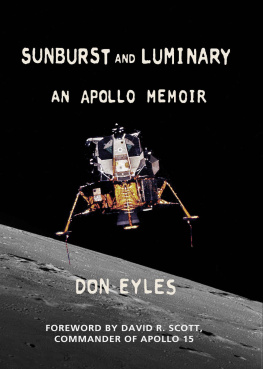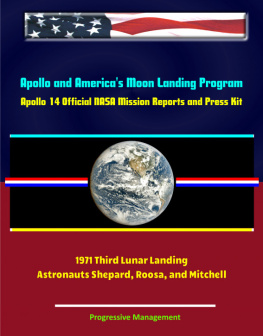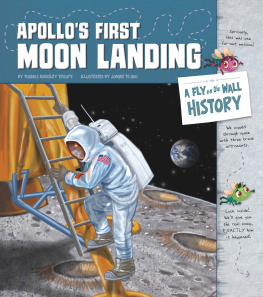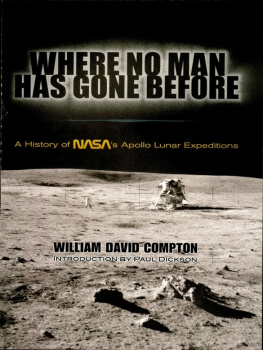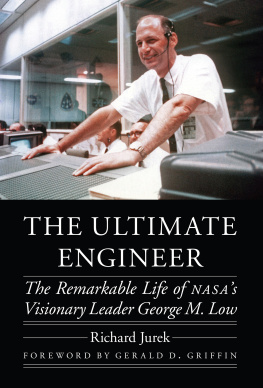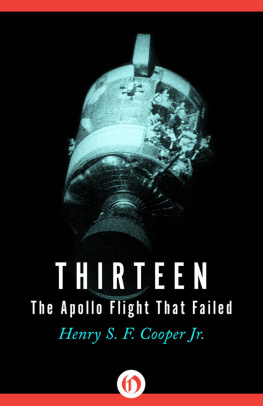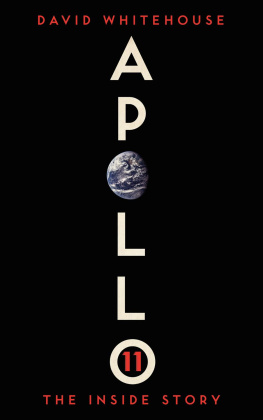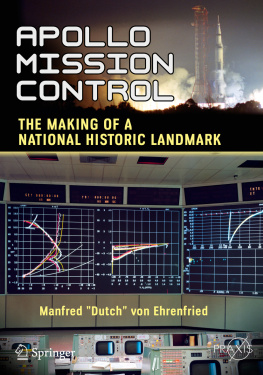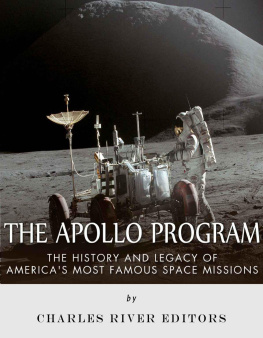All rights reserved. No part of this work may be reproduced without written permission except for brief quotations in critical articles and reviews.
This work is the first publication of Fort Point Press, founded by the author in the Fort Point neighborhood of Boston with the ambition to publish books of literary and historical excellence that do not underestimate the technical literacy of the 21st century audience.
FOREWORD
I have often been asked, "What is the most dangerous part of walking on the Moon?"
My answer is, without hesitation, "Landing on the Moon."
The Lunar Module must slow from about 3,800 miles per hour to a level hover at 100 feet above an unknown surface and descend through thick dust to a soft touchdown amongst craters, boulders and rocks that have never been seen on any photograph. The margin for error is essentially nil. There is no assistance from Mission Control; there is no back-up computer; and only 30 seconds of propellant reserve is available when the decision must be made to either land and shut down the engine, or command an abort back to lunar orbit. There will never be another chance to try again or to return to the Moon.
During the most critical phase of the landing, the LM must be controlled internally from 50,000 feet to touchdown through a single, very small, and very slow, computer, using software programs that were written, by hand, by a single engineer. That software must be absolutely infallible. When the guidance software for the lunar landing was to be developed, this daunting task was assigned to an engineer who had no formal computer training (none available) and who was only 23 years old! That engineer was Don Eyles, and the software he wrote was part of a program called Luminary.
Eyles was a member of an extended family of 400,000 dedicated engineers, pilots, scientists, managers and other essential members of a remarkable team that repeatedly relied on a single individual to invent, conceive, or imagine one of the vast number of essential elements of the mission that had to work. This amazing feat of the Apollo family was achieved during the 1960s, a period of national and international conflict, confusion, turbulence, and disappointment. And during this difficult period, and during Apollo, a contrast of cultures was blended into this remarkable family with no (or very little) conflict, confusion, or turbulence. As history will show, time and time again, members of this diverse and often culturally-opposed family stepped up to a challenge that seemed impossible but theirs was success after success, nearly beyond imagination.
In this book, Don Eyles has described his life and times among this family during this remarkable period. His descriptions are concise, coherent, and complete the book is both entertaining and educational. We learn about the technology computers, simulators, procedures and techniques. We learn about the people throughout the book, Eyles relates his interactions with notable astronauts and NASA managers, and his impressions of their characters and capabilities. And we learn about the cultures how he was assigned his tasks, how he worked night after night, and even how he might otherwise have gone to Woodstock.
Eyles highlights another unique aspect of the Apollo culture, a management style that facilitated open communication among astronauts, engineers, and scientists. He spent many hours in simulators with astronauts. He obtained an understanding of the demands and challenges of spaceflight and learned how to formulate complex computer instructions for the crews to use during normal and emergency flight operations. Concurrently, astronauts became familiar with the challenges of writing effective software for our small, slow computer. This teamwork was typical of Apollo and it marks Apollo as a major milestone in productive human relationships among culturally and intellectually diverse individuals.
Among his other achievements, Apollo 14 brought Eyles a special notoriety including an invitation to the White House. Less than four hours prior to the planned descent from lunar orbit, the bright red Abort button on the LM 's instrument panel illuminated and began sending a spurious signal to the computer that would have aborted Alan Shepard and Edgar Mitchell's landing at the moment the descent engine was ignited. Eyles had written the code that monitored that signal. At 1:00 in the morning he was called on to attempt to write a workaround for the problem, with no allowance for error. In less than two hours, not only did he write the workaround, but it was verified in simulators at both MIT and Houston, and then read up to the crew.
That clever workaround simply changed a few registers, first to fool the abort monitor into thinking that an abort was already in progress, and then to clean up afterward so that the landing could continue unaffected. The procedure required inserting 61 precise and sequential keystrokes on the computer keyboard (the DSKY ) under severe time pressure. Mitchell executed the procedure flawlessly and it worked perfectly. Apollo 14 landed at its target point on time, and the Apollo program once again proceeded without a major setback.
An Apollo 14 failure, coming after the near-tragic failure of Apollo 13, would very likely have doomed my mission, Apollo 15, to a paper exercise. (Apollos 16 and 17 were already facing cancellation.) Eyles solved that problem and thank goodness he did. He gave all 400,000 members of the Apollo family an opportunity to finish the Apollo program successfully and with pride and satisfaction an opportunity to complete the history of the first humans on the Moon without another failure. In this remarkable book, Don Eyles gives the rest of us an opportunity to share and learn about a major part of this history. Read and enjoy.
David R. Scott
Commander, Apollo 15
Los Angeles
March 2015
AUTHOR'S NOTE
This book began in the mid-1980s as a sixty-page outline. From that point, if not before, I accepted responsibility for telling the story of the LM flight software as I experienced it. David Chandler and Paul Larson read the outline and encouraged the project. However I did not return to it until well past the millennium.
As, rather suddenly, the story began to seem complete, readership exploded. First came my amore, Denise Bosco, with her sharp eye for errata. Peter Adler, David Mindell, John Tylko, Paul Fjeld and Marjorie Shepatin read early versions and made valuable comments.
Norm Sears, a key participant in the events, gave me his point of view. For many years we regularly played tennis and ate Chinese food at the Royal East Restaurant on Main Street when it was still the domain of Otto Chang in a group that also included Hal Laning and Dick Battin. I have benefited tremendously from their friendship and from the remembrances and insights they provided me.

